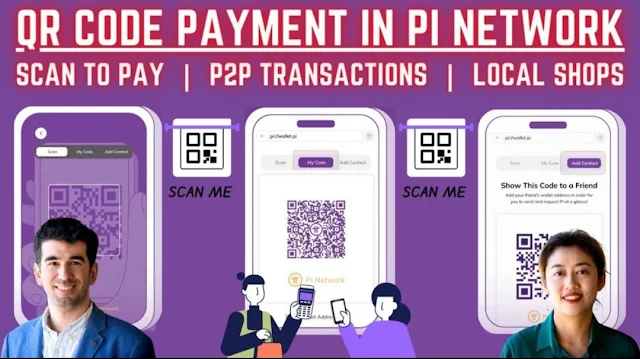From the Pi Core Team: Payment From Application to User - hokanews

From the Pi Core Team: Payment From Application to User - hokanews
hokanews.com - Pi (π) payments from application to user (A2U) are not just transactions but a significant evolution in the digital currency ecosystem. Behind the sophistication of A2U lies a well-coordinated collaboration between the Pi Blockchain and Pi backend, creating a seamless user experience and enhancing the level of privacy provided to users.
Why Is This Important?
1. Enhanced User Privacy: Through the A2U API, users have full control over access to their wallets. By granting permission for applications to access their wallet addresses, users can ensure the security and privacy of their data. This also encourages developers to use user data only when necessary, enhancing overall user privacy.
2. User Wallet Accuracy: The A2U API not only facilitates payments but also ensures that user wallets are always accurate. By returning the updated wallet address if necessary, this API avoids the possibility of sending Pi to invalid or inaccessible addresses.
3. Better User Experience and Protection for App Developers: In the blockchain world, transactions cannot be reversed once executed. By connecting to the Pi backend servers before, during, and after transactions, developers can ensure that each transaction is properly recorded. This helps prevent technical errors and allows for the recovery of metadata and blockchain transactions if needed.
4. Seamless Integration with the Pi Ecosystem: By using the A2U API, each transaction can be clearly identified as originating from a specific application. This allows users to view transactions contextually in their wallets, paving the way for a more cohesive and interactive user experience in the future.
Concrete Steps in A2U Implementation
Implementing A2U involves a series of well-coordinated steps between application developers, Pi backend, and Pi Blockchain. Here are some key stages in this process:
1. User Permission Setup: Before an application can access a user's wallet, the user must grant permission through a clear and understandable interface. This ensures that users have full control over their data and reduces the risk of misuse of information.
2. Wallet Address Validation: Before making a payment, the application must validate the user's wallet address to ensure that it is still valid and accessible. This prevents sending errors and increases transaction accuracy.
3. Transaction Monitoring: After a successful payment, the application should provide updates to the Pi backend and actively monitor transactions to ensure that everything is properly recorded. This helps prevent errors and ensures data consistency across the platform.
4. Recovery and Error Management: In case of technical errors or system failures, the application should have robust recovery mechanisms to ensure that transactions can be safely recovered without disruption to users.
With A2U, the Pi Core Team has opened the door to a future of payments that are safer, more efficient, and more integrated with the blockchain ecosystem. By prioritizing user privacy and providing the tools needed for developers to protect their assets, A2U is a significant step in strengthening Pi's position as one of the leading digital currencies in the world.
FROM PI CORE TEAM: PAYMENT FROM APPLICATION TO USER.
— CaoLoi Crypto (@loitau32) February 12, 2024
The current design of A2U payments involves both interacting with the Pi Blockchain and the Pi backend. The Pi blockchain is obviously the only source of truth for exchanging Pi. The Pi backend is used to improve the end-user… pic.twitter.com/GuWiPgaYGb
Read other articles from us via pi.hokanews.com web3.hokanews.com and live.hokanews.com



